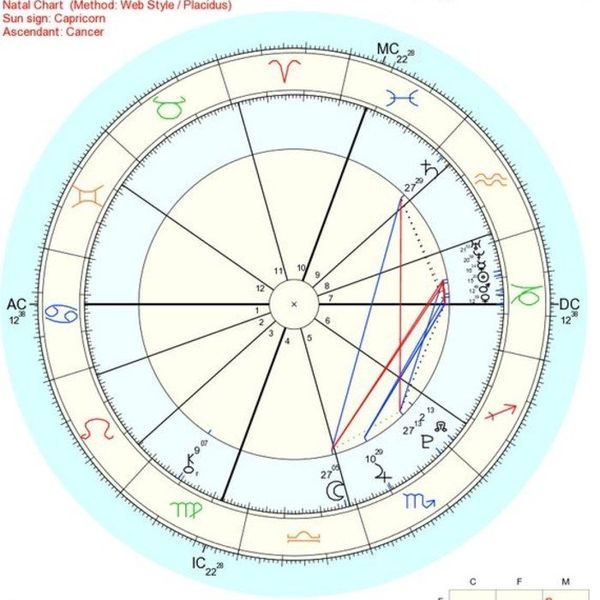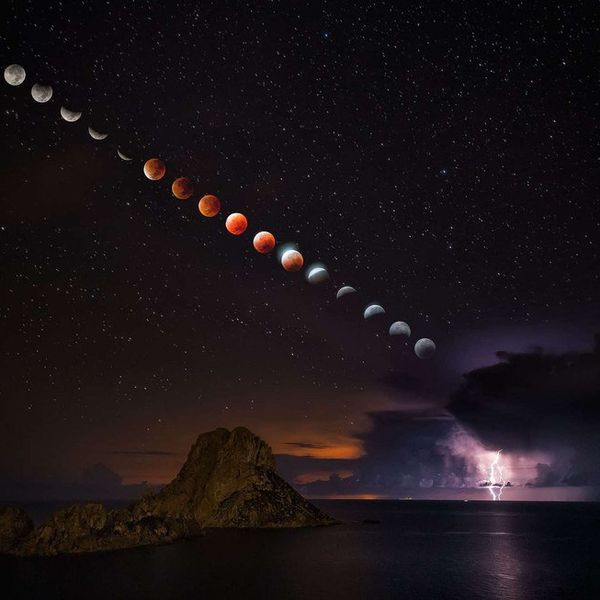Professor Noe-Tall Explains The Science: NASA's Seven Planets
Professor Noe-Tall, world famous science expert who has been
widely admired for explaining complicated science-based issues–such
as his groundbreaking webcast "Water is Wet" and his
e-book, "Falling Trees Make Noise"–met with this intrepid
reporter to discuss the recent NASA discovery of seven planets
orbiting a distant star.
ME: Well professor, big news from NASA this week! The discovery of seven Earth sized planets orbiting a distant star sounds very exciting.
Professor: I'm sure it seems that way to you. You seem to get excited by...
ME: That was supposed to be private! Anyway, what can you tell us about this discovery? Will we be sending spaceships to visit these planets?
Professor: This is one of the reasons I keep telling NASA to let me explain the science. This discovery, while important, is of more consequence to astronomers and cosmologists than it is to a very, very average person like you. For instance, this star is forty light-years away!
ME: But that doesn't seem very far.
Professor: That's because you don't understand science! When we use light as a measurement of distance, in part, it is because something is so far away regular quantitation produces numbers so large that normal brains can't grasp them. Light is extremely fast, it travels 186,000 miles in a second. That means that a light-year, or the distance a light photon travels in one year, is 5,879,000,000 miles–nearly six trillion miles! The star being discussed is forty times that distance.
ME: But wouldn't we use really fast spaceships? So it wouldn't take that long?
Professor: No. Matter cannot travel at the speed of light. Einstein figured that out a hundred years ago. The current technology in space travel is so rudimentary that we don't even describe it as a fraction of light speed. Do you remember the pictures of Pluto that were recently published by NASA?
ME: Sure. Also, why isn't Pluto a planet anymore?
Professor: One subject per interview, you simpleton! The ship that traveled to Pluto at one point was traveling at a rate of nearly 100,000 miles an hour. Upcoming missions should exceed 450,000 MPH at times. Even at that rate of speed it would take an astronaut 522,577,778 hours, or sixty thousand years to get there!
ME: You'd need to pack a lot of snacks.
Professor: You are an idiot. You can read more about the speed of spaceships in this article by Caleb A. Scharf.
ME: OK. So, we won't be visiting these planets anytime soon, because of science. But what about the inhabitants of these planets. Surely they could be more advanced than us and able to travel much faster, right?
Professor: {sigh} What inhabitants? We have no idea if it's even possible for life to exist outside of the Earth, let alone on some planets far away from here.
ME: Well, all the news people kept saying that these were “Earth-like” planets. They also said that they were in the “habitable zone”, doesn't that mean life?
Professor: No.
ME: No?
Professor: Astronomers use the terms habitable zone, comfort zone and even Goldilocks zone to describe planets that orbit a star at a distance where water can remain liquid. To further explain, the Earth is located within the habitable zone of our star, Sol. If the Earth were closer to Sol–which you refer to as the Sun–it would be too hot on the surface and all of the water in the oceans would boil away. If it were much further away it would be too cold and we wouldn't have oceans, we'd have lots and lots of ice.
ME: So there's liquid water on these planets. Doesn't that mean that it would be a good place to look for other people?
Professor: We don't know that there is liquid water on these planets. We only know that, if there is H2O, it would be in a liquid form. Perhaps it would be better for me to explain a bit more.
ME: No, I think I understand. The Earth is something like 93,000,000 miles away from the Sun. At that distance water doesn't boil or freeze, it's just water. So these seven new planets are same distance away from their star and, because of that, they may have water. But it seems likely, right? I saw the pictures of the planets that they showed on TV.
Professor: You are a special kind of clueless, aren't you?
ME: Mom always said I was special.
Professor: We don't have any pictures of these planets. What you saw were artist's interpretations of what these planets might look like, based on very limited information.
ME: But they saw the planets, right? Through a telescope?
Professor: No. The scientists who discovered all of this are using the relatively new TRAPPIST telescope to–
ME: Wait a minute! Did you say Trappist? Like the monks? The ones who brew the tasty beer? I love beer.
Professor: Well, you almost got that one right. TRAPPIST is an acronym. It stands for Transiting Planets and Planetesimals Small Telescope. It is a reflecting telescope whose primary mirror is nearly two feet across. They aim it at distant stars and measure tiny changes in the brightness of those stars. By doing this over many nights they can determine if the fluctuations in luminosity are from planets passing between the star and us. By measuring the spectrum of light as it changes they can also detect the various elements that the planets are made of–this is called spectroscopic analysis.
TRAPPIST discovered three planets closely orbiting a star last year. NASA determined that this made the star a good target for further research. They aimed the Spitzer Space Telescope at this star to see what they could learn. This is what led to the recent announcement.
If you look very, very closely at a star its possible to detect minor movements that can be caused by the gravity of nearby objects. When you add together the brightness changes, the color spectrum and tiny wobbles you can accurately detect the presence of planets, how many of them there are, how big they are, how far from the star they are and what they are made of. For the most part. What you cannot do is see the planets. But yes, they did name the telescope after the beer brewing monks. And the Spitzer was named after an astronomer who really championed the idea of a telescope in space, way back in the 1940's.
ME: But what about the habitable zone stuff?
Professor: A star's habitable zone depends upon the size of the host star and the energy output of the star. In this case we are talking about an ultra-cool dwarf star. Dwarf stars are very small; TRAPPIST-1 is only about the size of Jupiter. The energy output of this star is also very low, so the habitable zone is very close to the star. So close that these planets orbit at a distance that is closer to the star than Mercury is to ours.
ME: What difference does that make?
Professor: Mercury is the second hottest planet in our system. It is almost tidally locked to the Sun, mostly as a result of that distance. A day on Mercury–sunrise to sunset–takes nearly a year from the planet's perspective.
ME: What?
Professor: On Earth a day takes 24 hours. This is how long it takes to spin one full rotation. We orbit the Sun every 365 and a quarter days. Mercury, because it is very close to the Sun, orbits much faster. It only takes 88 Earth days for Mercury to complete one circuit around the Sun, but it takes 60 Earth days for Mercury to complete one “day” rotation.
ME: So?
Professor: So, by being much, much closer to the very hot Sun, these very long Mercury days allow the planet to heat up and the night time cool down takes nearly two months to happen. An average day on the Sun side of Mercury sees temperatures of around 800 degrees–that's hot enough for lead to melt!
ME: What does that have to do with the new planets?
Professor: Because the planets orbiting TRAPPIST-1 are so close there is a very good chance that they are tidally locked, which would make for some very hot temperatures.
ME: Hang on, that's the second time you mentioned that. What is tidally locked?
Professor: Our moon is tidally locked to the Earth. This is why we only see one side of the moon. The moon's orbit is exactly the same as its rotation, so one side is always facing towards us. This works fine for a lifeless chunk of rock orbiting a planet, but when this happens to a planet orbiting a star the day side never has a chance to cool off. The star side is too hot to support any possible form of life, and the dark side never warms, making it far too cold for life.
ME: What about the edges? Wouldn't that mean that there was a tiny sliver of the planet that was like an island in the Caribbean?
Professor: What? How did you figure that out?
ME: I read ahead.
Professor: Ah. Yes, you are surprisingly correct in that. There may be a tiny area that could provide the correct temperatures to support life and liquid water. But for life to evolve, at least as much as we understand it, would likely require a bit more real estate.
ME: OK, I think I understand. This new discovery is exciting because it's a discovery, seven earth-sized planets orbiting a distant star in a way that is vaguely similar to our own solar system. This tells us that our solar system isn't entirely unique, that it's possible for many of the stars in the sky to support planetary systems, but it's very far so we aren't visiting any time soon and it's doubtful that there are aliens there.
Professor: Yes, that is exactly what I've been saying. Are you on some sort of new brain drug?
ME: Just the same ones I've been taking since high school.
Professor: And that's all the time that I have.





















